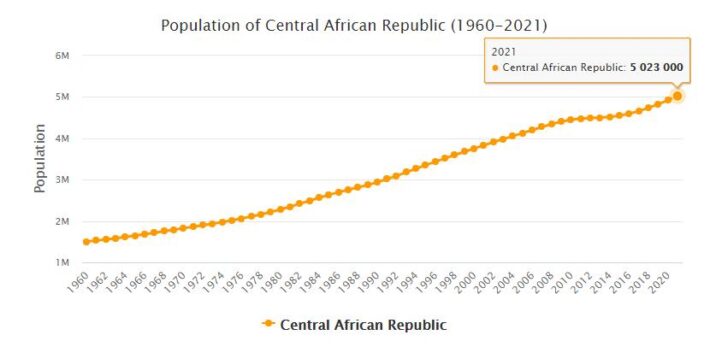Yearbook 2012
Central African Republic. Jean-Jacques Demafouth, leader of the disarmed rebel group APRD (Armée populaire pour la restoration de la republic et la democratie), was arrested in January along with several other oppositions who were all accused of causing concern in the country. Demafouth was released in April.
In March, the search for the wanted leader of the Ugandan guerrilla group of the Lord’s Resistance Army (LRA), Joseph Kony, which was believed to be somewhere in the eastern part of the Central African Republic, intensified. Kony and his guerrilla band are suspected of numerous child kidnapping, massacres, rapes, mutilations and looting and more during the 25 years they have been active. Nowadays, the LRA is estimated to consist of 200-500 guerrillas. Kony and four other LRA leaders were called in 2005 by the International Criminal Court (ICC) in The Hague. In 2012, only Kony and two of his closest men, Okot Odhiambo and Dominic Ongwen, had not been arrested.
- AbbreviationFinder.org: Provides most commonly used acronyms and abbreviations for Central African Republic. Also includes location map, major cities, and country overview.
The African Union (AU) deployed a force of 5,000 soldiers from the Central African Republic, Uganda, Congo (Kinshasa) and South Sudan to arrest or kill Kony. In addition, the United States sent 100 American elite soldiers to assist in the pursuit of the warlord. The fact that the hunt intensified at that time was due to the fact that the American organization Invisible Children via social media, such as YouTube, had managed to distribute a film about Kony all over the world. The organization demanded that the authorities stop Kony.
Despite the great effort, the AU soldiers were unable to find Kony in the spring. In May, however, they arrested one of the LRA leaders, Caesar Achellam. In the autumn of 2012, AU soldiers continued their search for the wanted ones.
In May, the rebel groups APRD and UFDR (Union des forces democratiques pour le rassemblement) disbanded, and their forces began to give up their weapons. Both groups signed peace agreements with the government in 2008 and received ministerial posts, but the APRD had left the peace process as late as early 2012 when the group leader Demafouth was arrested. UFDR was fragmented; some of the group’s rebels had begun to arm themselves again as the implementation of the peace agreement expired at the time.
In June, President François Bozizé dismissed Finance and Budget Minister Sylvain Ndoutingai, who is the nephew of the President and who has been one of Bozizé’s closest allies since taking power in 2003. Ndoutingai, who is suspected of preparing a coup, was replaced by former Finance Minister Albert Bessé.
In November, President Bozizé ordered his own son arrested for an unpaid hotel bill. His son, Kevin Bozizé, sat in police custody for days after he refused to pay a $ 15,000 bill at a five-star hotel in Bangui’s capital. When the bill broke out, the hotel manager was also arrested, but this was released when the president had clarified what had happened.
In November, several battles between the army and rebels were reported. In December, a rebel group called Seleka took control of several cities in an offensive against President François Bozizé. Among the first cities to be occupied were Ndele in the north, which is an important connection to neighboring countries. Later, the rebels took Bria, an important mining town in the central parts of the country where there are plenty of diamonds. Then they took control of the country’s third largest city, Bambari.
Seleka, which means “alliance” in the local language sango, had been formed by outbreak factions from the three former armed groups that had previously signed peace agreements with the government. Some of the former rebels had joined the army and later deserted. Seleka said the government had not fulfilled the terms of the peace treaties, such as freeing political prisoners and paying compensation to disarmed rebels. Seleka moved towards the capital Bangui and threatened to dismiss Bozizé if he did not negotiate. The army was reported to make little resistance, which may be due to a lack of weapons and other resources and the soldiers often lack training.
President Bozizé asked the United States and the former colonial power France to help stop the rebels, but both refused. The US closed its embassy and urged its citizens to leave the country. France responded that their soldiers in the Central African Republic were only there to protect Frenchmen, not the Central African government. However, Chad sent a squad to the country.
At the end of December, the Central African government and the rebels agreed to initiate talks with the help of the regional cooperation organization ECCAS. The talks would start no earlier than January 10, 2013 in neighboring Gabon’s capital Libreville. The regional peace force Fomac would be expanded with more soldiers from neighboring countries. In addition, France sent a smaller force.
On New Year’s Eve, December 31, Seleka threatened to occupy the capital Bangui and was less than ten miles away. Curfew was introduced in the capital. In an attempt to stop the rebels, Bozizé said, after a conversation with the African Union, that he was prepared to offer Seleka a seat in a unifying government.
Population 2012
According to countryaah, the population of Central African Republic in 2012 was 4,493,059, ranking number 124 in the world. The population growth rate was 0.480% yearly, and the population density was 7.2124 people per km2.
